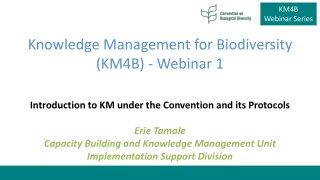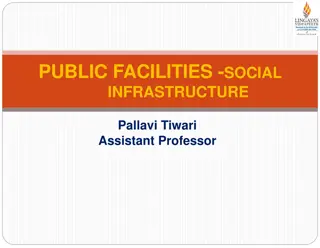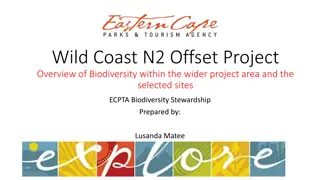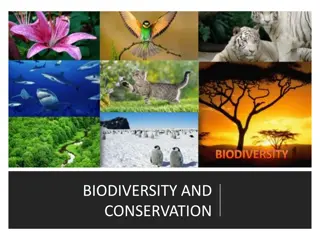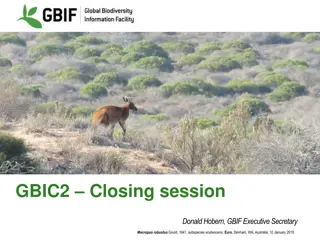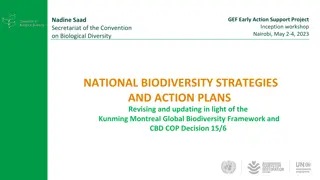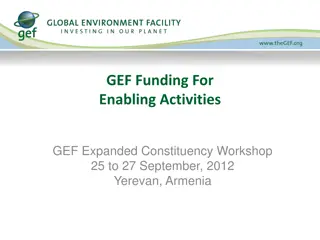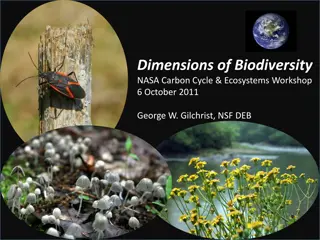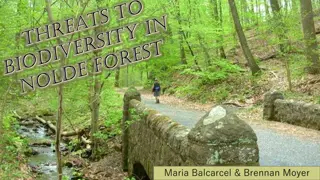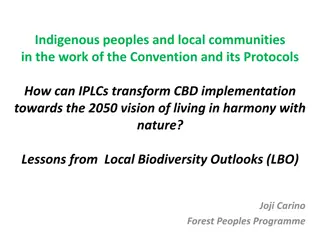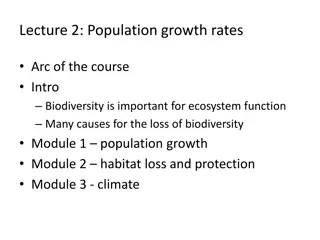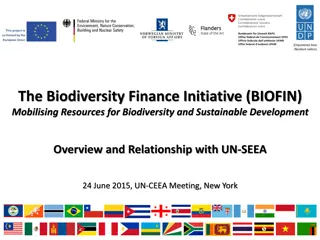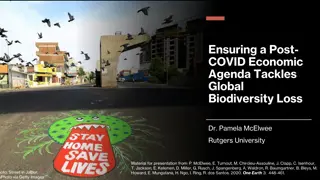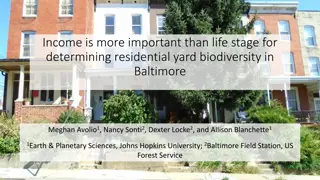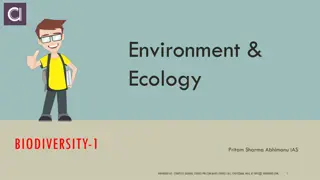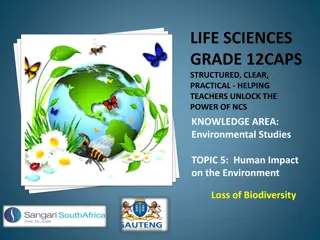Understanding Human Impact on Biodiversity Loss
Mass extinctions, endangered species, and critical biodiversity areas are all at risk due to human activities such as habitat destruction, invasive species, harvesting, hunting, poaching, and pollution. Learn how these factors contribute to the decline of species and ecosystems.
Download Presentation

Please find below an Image/Link to download the presentation.
The content on the website is provided AS IS for your information and personal use only. It may not be sold, licensed, or shared on other websites without obtaining consent from the author. Download presentation by click this link. If you encounter any issues during the download, it is possible that the publisher has removed the file from their server.
E N D
Presentation Transcript
Biodiversity at Risk
Mass Extinction Extinction of many species in a relatively short period of time The current mass extinction is different because humans are the primary cause of the extinctions
Species Prone to Extinction Species more at risk include those that migrate, those that need large or special habitats, and those that are exploited by humans Endangered species: likely to become extinct if protective measures are not taken Threatened species: has a declining population and is likely to become endangered if it is not protected
How Do Humans Cause Extinctions? Habitat Destruction and Fragmentation As the human population grows, we use more land to build homes and harvest resources Causes almost 75% of extinctions now occurring
How Do Humans Cause Extinctions? Invasive Exotic Species Species that is not native to a particular region Threaten native species that have no natural defenses against them
How Do Humans Cause Extinctions? Harvesting, Hunting, and Poaching Rare species are harvested and sold for use as pets, houseplants, wood, food, or herbal medicine Many countries have laws to regulate hunting, fishing, harvesting, and trade of wildlife Poaching: the illegal harvesting of fish, game or other species
How Do Humans Cause Extinctions? Pollution Pesticides, cleaning agents, drugs, and other chemicals get into food webs Long term effects may not be clear for many years
Areas of Critical Biodiversity Endemic species: species that are native to and found only within a limited area Often used as an indicator of biodiversity because plants form the basis of ecosystems on land
Areas of Critical Biodiversity Tropical Rain Forests Over half of the world s species Most never described Species disappearing as forests are cleared for farming or cattle grazing
Areas of Critical Biodiversity Coral Reefs and Coastal Ecosystems Occupy a small fraction of marine environments, but contain the majority of the biodiversity there Provide millions of people with food and tourism revenue Protect coasts from waves and are sources of new chemicals Not well protected Threatened by overfishing and pollution
Areas of Critical Biodiversity Islands Colonizing species may evolve into several new species Hold limited sets of species Many species become endangered by competition from exotic species
Areas of Critical Biodiversity Biodiversity Hotspots The most threatened areas of high species diversity 25 areas identified by international conservationists Mostly tropical rainforests, coastal areas and islands
Areas of Critical Biodiversity Biodiversity in the United States U.S. includes a wide variety of unique ecosystems Unusually high numbers of species of freshwater fishes, mussels, snails, crayfish, land plants like pine trees and sunflowers


